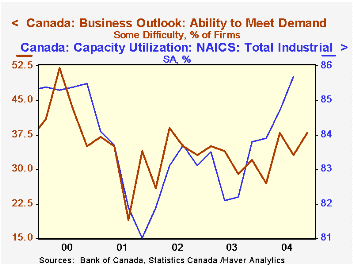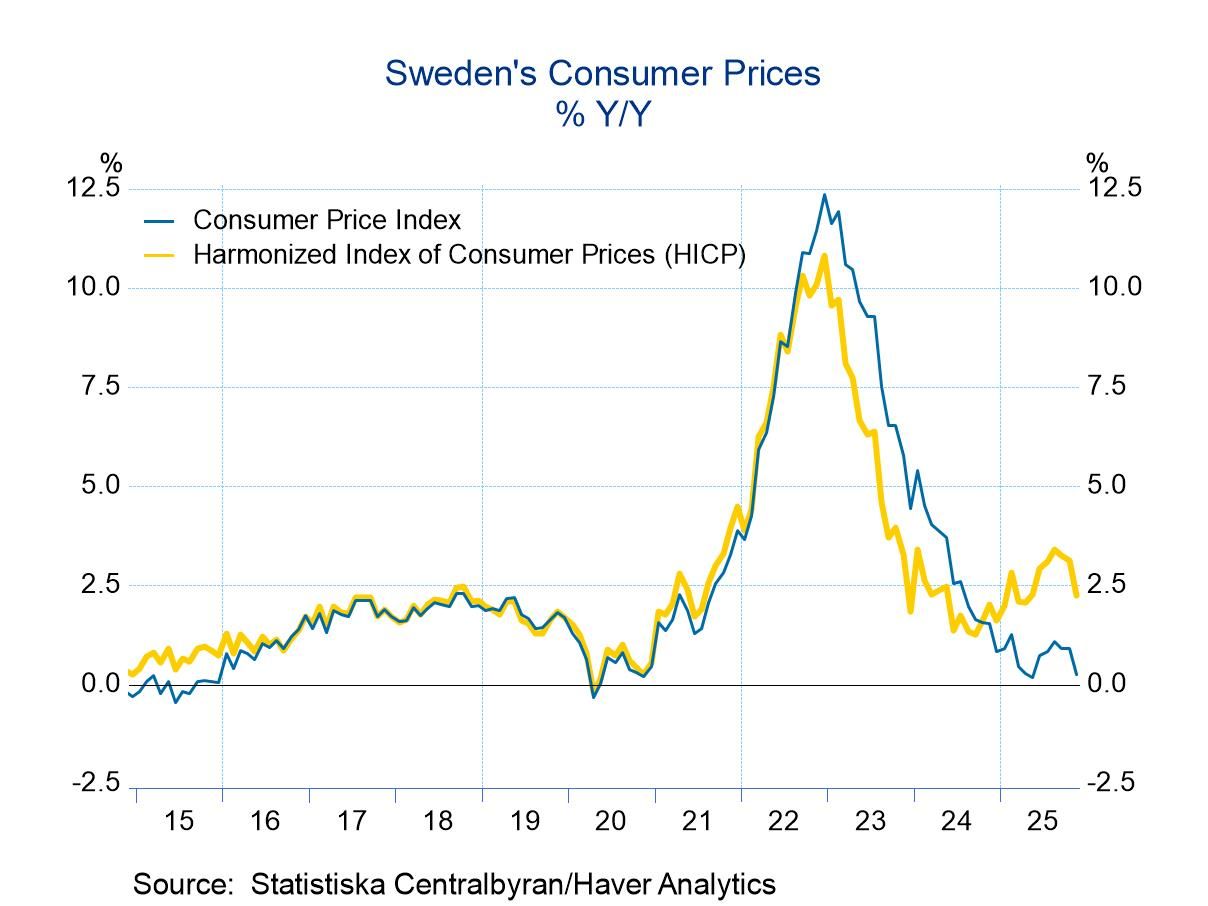 Global| Jan 18 2005
Global| Jan 18 2005Canadian Business Outlook Survey Provides Food for Thought for The Bank of Canada's Interest Rate Meeting on January 25
Summary
The Bank of Canada released the findings of its Winter 2004-5 Business Outlook Survey today. The Survey is one of the inputs used by the Bank in its determinations of monetary policy that will be discussed at its next interest rate [...]

The Bank of Canada released the findings of its Winter 2004-5 Business Outlook Survey today. The Survey is one of the inputs used by the Bank in its determinations of monetary policy that will be discussed at its next interest rate setting meeting on January 25. The Bank raised its overnight target rate on September 8, 2004 to 2.25% from 2% and on October 19 to 2.50% where it has since remained.
Business is still optimistic, but less so than in the Fall survey. The balance of firms who expect increases over those who expect declines in future sales growth fell from 21.8% in the third quarter to 7.9% in the fourth quarter.
The Survey revealed that more firms expect to encounter some difficulty in meeting unexpected increases in demand, although fewer firms expect significant difficulty. The percent balance of those firms expecting some difficulty in meeting unexpected demand rose from 33% in the third quarter to 38% in the fourth quarter. While the percent balance expecting significant difficulty declined from 10% to 7% in the same period, the trend in those expecting significant difficulty has definitely been rising, though irregularly, since the last half of 2001. In all, the excess of firms expecting difficulty in meeting unexpected demand was 45%, up from 43% in the previous quarter. The balance of firms expecting to encounter some difficulty in meeting demand is a reasonably good indicator of business capacity utilization, as shown in the attached chart.
With increased capacity utilization, it is not surprising that business expects to increase employment and expenditures on machinery and equipment In the latest survey, the balance of firms expecting to increase machinery and equipment expenditures rose from 16.8% to 21.8% and the balance of firms expecting to increase employment rose from 32.7% to 37.6% even though the balance of firms experiencing a labor shortage fell from 44% to 36%
While the increase in the balance of firms expecting difficulty in meeting demand suggests an increase in inflationary pressures, the Survey showed a lessening of inflationary pressure from business pricing expectations. There was a significant decline in the balance of firms experiencing a decline in input prices--due, no doubt, to the rising Canadian dollar-- and an even larger decline in the balance of firms expecting to raise their output prices. The balance expecting a decline in input prices fell 22.8 percentage points and those expecting to raise output prices fell 24.8 percentage points from the Fall to the Winter survey. With regard to general inflation, the Survey revealed that the percentage of firms expecting inflation to be between 1 and 2% declined from 33% to 29% while the percentage of firms expecting inflation to between 2 and 3% rose from 54% to 56% and those expecting inflation of over 3% rose from 9% to12%.
| Percent Balance | Q4 04 | Q3 O4 | Q4 03 | Q/Q Dif | Y/Y Dif | 2004 | 2003 | 2002 | 2001 |
|---|---|---|---|---|---|---|---|---|---|
| Future Sales Growth | 7.9 | 21.8 | 32.0 | 13.9 | 24.1 | 17.9 | 22.0 | 21.8 | -1.4 |
| Investment in machinery and equipment | 21.8 | 16.8 | 11.0 | 5.0 | 10.8 | 17.0 | 3.0 | 10.7 | -2.9 |
| Future employment | 37.6 | 32.7 | 27.0 | 5.0 | 10.6 | 33.4 | 18.0 | 29.2 | 14.8 |
| Some difficulty in meeting demand | 38 | 33 | 32 | 5 | 6 | 34 | 33 | 33 | 31 |
| Significant difficulty in meeting demand | 7 | 10 | 6 | -3 | 1 | 7 | 6 | 5 | 4 |
| Labor shortage "Yes" | 36 | 44 | 30 | -8 | 6 | 38 | 33 | 37 | 42 |
| Input prices | -22.8 | -1.0 | -4.0 | -21.8 | -18.8 | -3.5 | -6.5 | 7.7 | -19.3 |
| Output prices | -14.8 | 9.9 | -19.0 | -24.8 | 4.1 | -3.2 | -6.0 | 3.7 | -13.5 |
| Inflation expectations | |||||||||
| 0% | 0 | 0 | 0 | 0 | 0 | 0 | 1 | 1 | 2 |
| 1-2% | 29 | 33 | 40 | -4 | -11 | 32 | 34 | 37 | 39 |
| 2-3% | 56 | 54 | 54 | 2 | 2 | 53 | 55 | 54 | 49 |
| over 3% | 12 | 9 | 3 | 3 | 9 | 11 | 10 | 5 | 4 |





